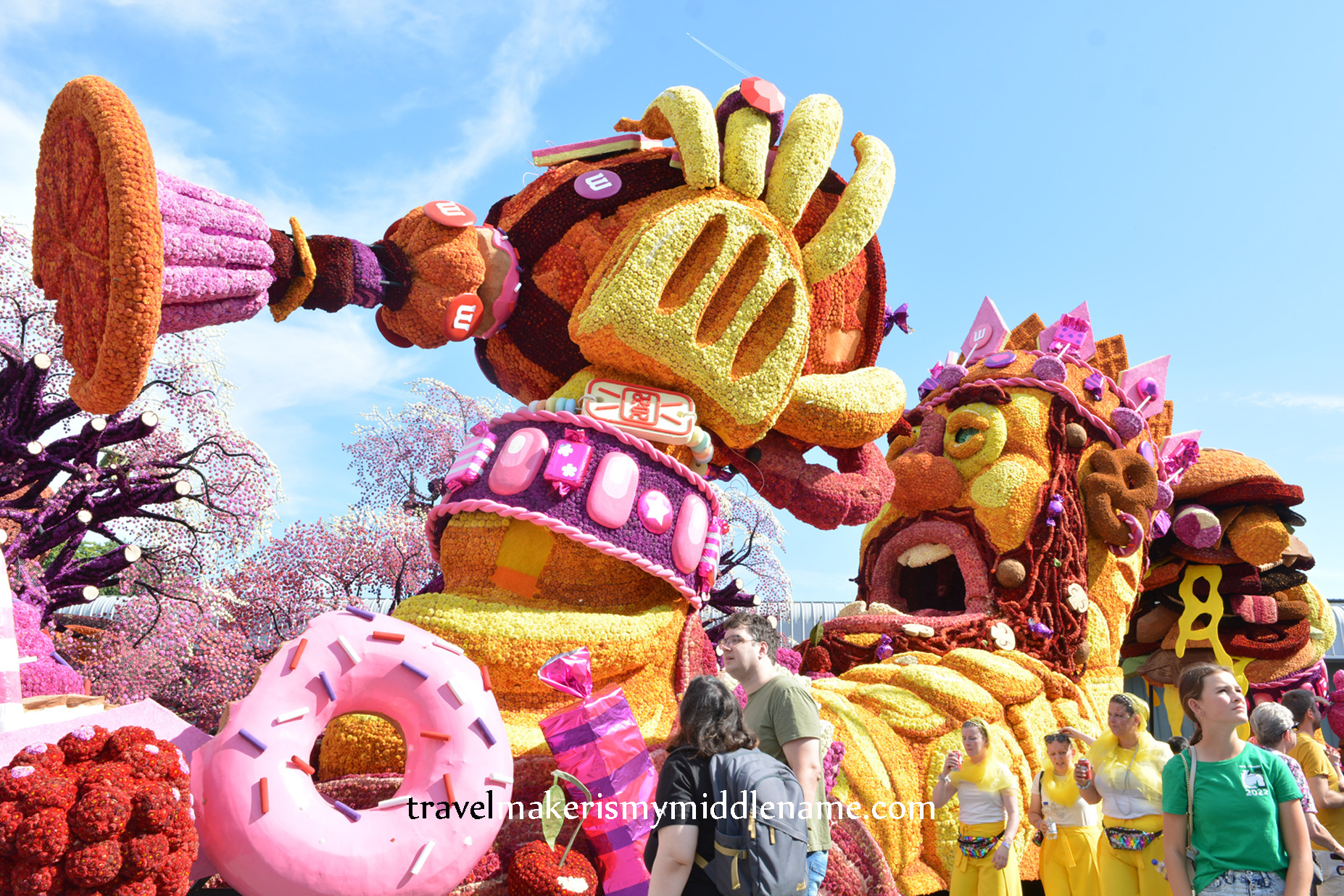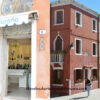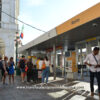Last Updated on: 25th April 2024, 01:13 pm
“Ever seen a dahlia float nine metres high? A wagon covered in flowers and pushed through the streets by human power? Corso Zundert would love to show you the magic of the world’s biggest dahlia parade.”
Corso Zundert organisers

Nine meters tall and up to 19 metres long: these are the giant parade floats decorated with flowers that are pushed along the streets of Zundert in the Netherlands once a year. Learn about the fascinating history of this intangible heritage-listed event.
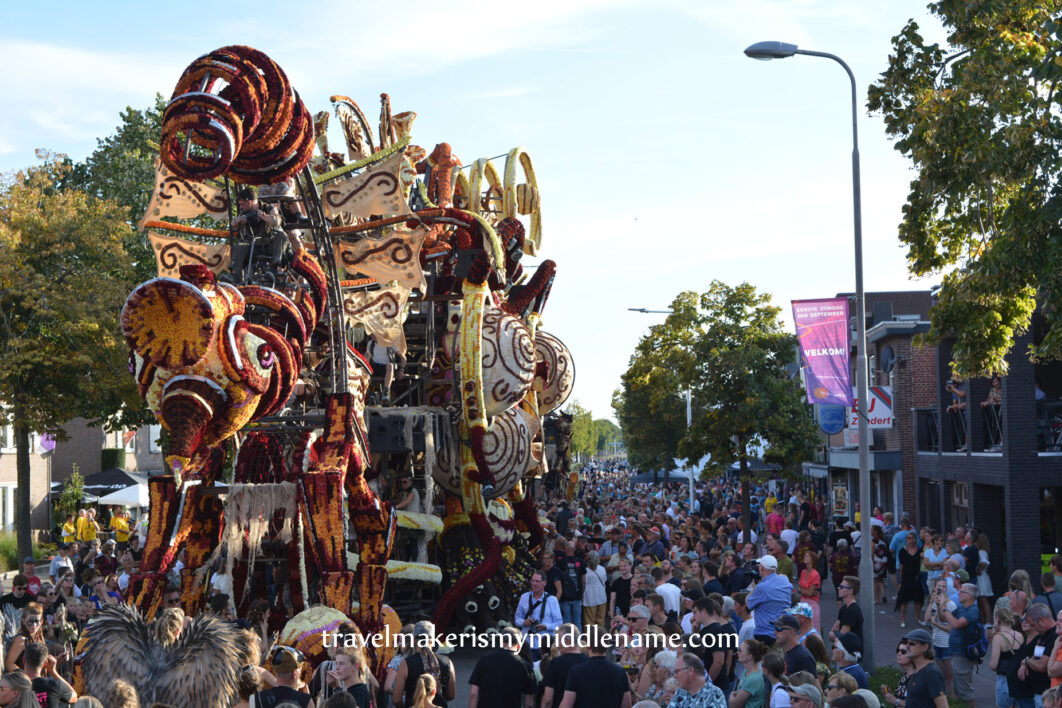
Corso Zundert is a heritage listed, annual parade of floats decorated with dahlia flowers that takes place in the Netherlands on the first Sunday of September. Giant parade floats of up to nine metres tall and 19 metres long are paraded down the street by local volunteers in the small town of Zundert, the birthplace of Dutch painter Vincent van Gogh. Each year, 20 local hamlets participate by designing and creating their float for the parade. Each hamlet decides on their own theme, and the parade can involve many performers.
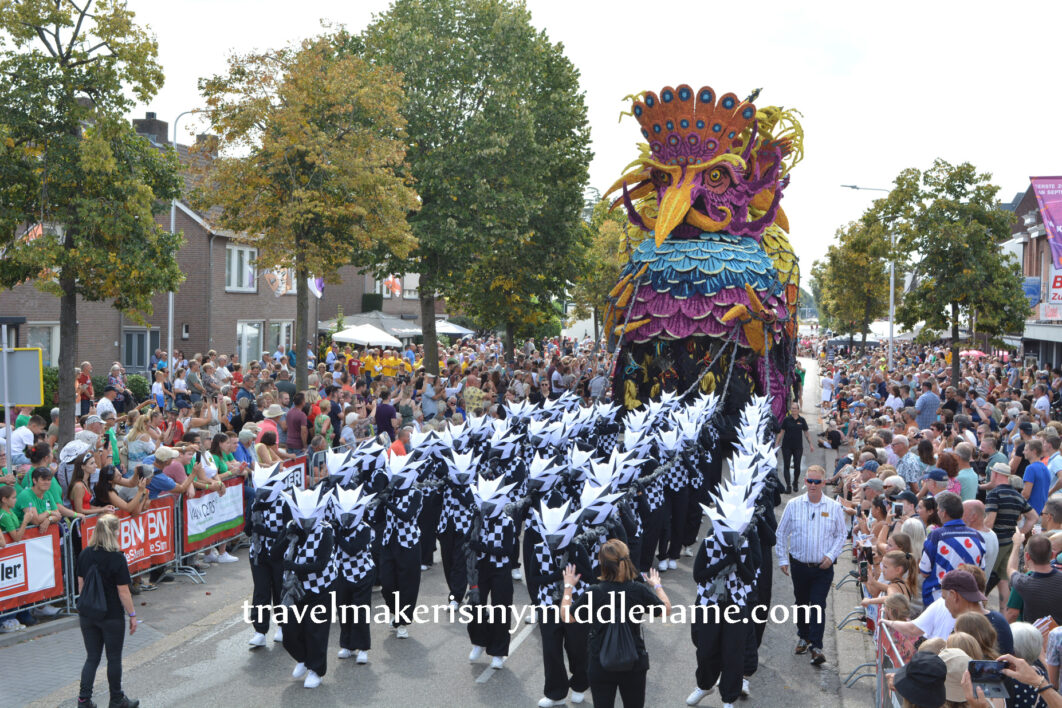

Corso Zundert is an event takes all year to prepare. Amazingly, the logistics is run entirely by volunteers: from the design and creation of the float, to the pushing of the giant floats, and even the planting and growing of the flowers, are all done by volunteers from the local area.
History of the parade
The first parade:
In 1936, Dutch arborist and alderman Pieter van Ginneken and a group of important locals developed a plan to revitalise the Queen’s Day celebrations. To honour the birthday (August 31st) of the then-queen of the Netherlands, Queen Wilhelmina, the team developed the idea of a flower parade that the citizens could participate in. Many types of local transport – bicycles, scooters, wheeled wagons, were decorated by local citizens with beautiful and colourful dahlias and paraded through the street. Thus, that year, the first flower parade in Zundert (Bloemencorso Zundert) was held on Tuesday, the 8th of September, 1936.

One of the first participants of Bloemencorso Zundert was a young lady who had a decorated bicycle.
To honour her and all the volunteers in the flower parade, an artist, Henk Groenhuis, was asked to create a commemorative bronze statue. The statue is named Het Corsomeisje (in English: “tour girl”) and can be seen in the center of city hall square.
The resulting parade was a huge hit with locals and so the event became an annual tradition.
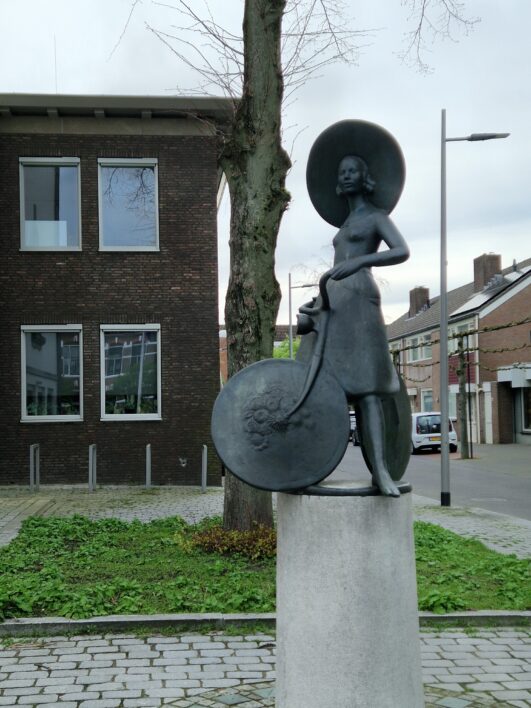
From 1938 onwards, the parade was held on the first Sunday of September regardless of the date. This change was made so that more people who otherwise had to work during the week but could not get time off, could also participate in the festival.
Unfortunately, there were no parades in the following year in 1939, nor during World War 2. The tradition resumed after the war ended in 1945, with several changes.
In 1946, the idea of hamlets were created by a mayor. This meant that the floats were no longer created by random groups of colleagues and friends, but through teamwork and collaboration by residents of each hamlet. This type of collaboration and competition between hamlets is unique to Corso Zundert and is different to other parades.
Today, there are 20 hamlets, and each hamlet can be addressed by name. There is no overall theme in the Corso Zundert event. Each year, each hamlet chooses their own theme and designs. Sometimes, a design may have a theme or message, other times it is created purely for aesthetics or other reasons.
The Netherlands has around 30 Corsos (parades) throughout the country. Corsos are diverse in many aspects: large and small, on land or by boat on water, and with flowers or with fruit. Corso Zundert, as the largest dahlia flower parade fall together under the heading ‘Corso culture’.
Why Dahlias are used
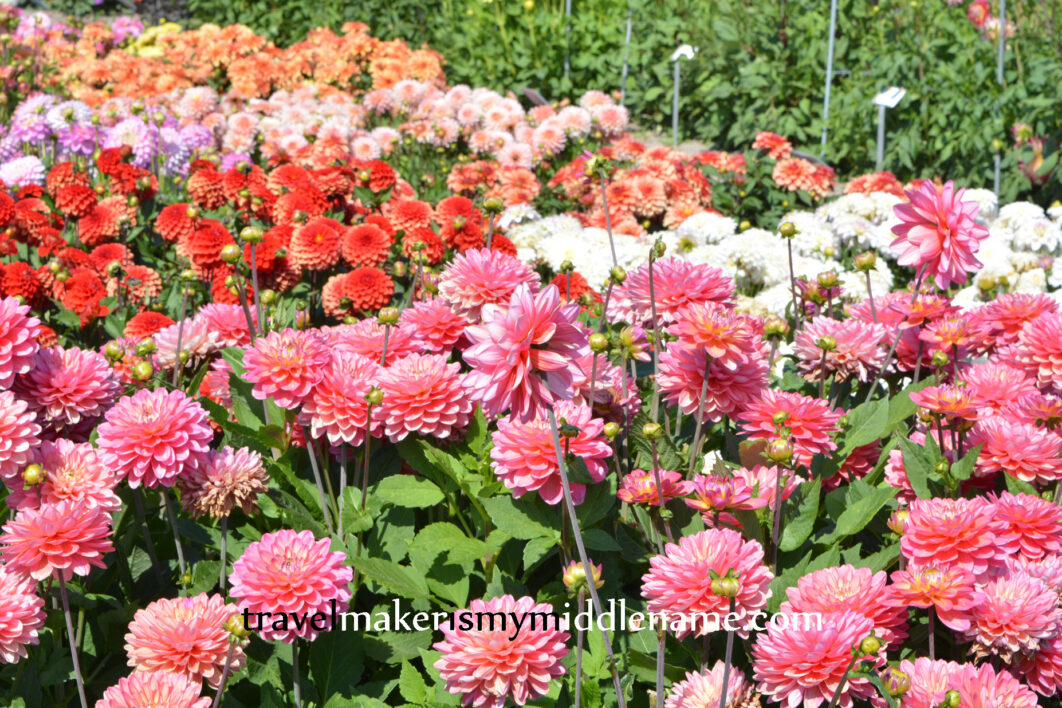
Although tulips are the Netherlands’ national flower, dahlias were used then and is still used now, for very good reasons.
Dahlias are among the easier-to-grow flowers, and are available in many colours. Dahlias are also hardy enough physically to last the time from harvest to exhibition, and can survive being nailed to the floats. Their colours also remain vibrant during this time. Even so, not all dahlias are suitable, so only specific ones are harvested and used.

How the dahlias are sourced
Each hamlet grows their own dahlias in fields they own or rent from farmers. The flowers and fields are grown and maintained by volunteers, and harvested for their own use, or sold at local or even international markets, and traded with other hamlets.
The year-long process behind the one-day event
In October, immediately after the parade for that year, the hamlets and the parade organisers start planning for next year’s parade. This includes budgeting.
Like tulips, dahlias are grown from bulbs. These are dug up at the end of autumn in November, to prevent them from rotting in the ground during winter. At the same time, designers work on the designs for next year’s parade float.
In December and January, internal exhibits and parties are held among the hamlets. Of course, since the floats have already been taken apart, only photos are on exhibit.
In February is when hamlets usually choose their design for the float. Design preparations are made, and in spring in April, the dahlia tubers are planted and maintained by volunteers, with preparation of the construction tents starting in May.
In June, the parade is planned with a model of the parade and the order of the marching of the floats from the 20 hamlets is decided.
Construction on the actual parade floats takes place from July until the parade. This is when volunteers from each hamlet come together to work in their free time after work and school and on weekends.
In August, an Open Tent Day is available for people who wish to visit the construction tents to see what it looks like behind the scenes. The dahlias are also picked in August, attached to the floats, and traded with other parades where necessary.
Finally, the parade takes place on the first Sunday of September. There is even a children’s parade on the third Sunday of September.
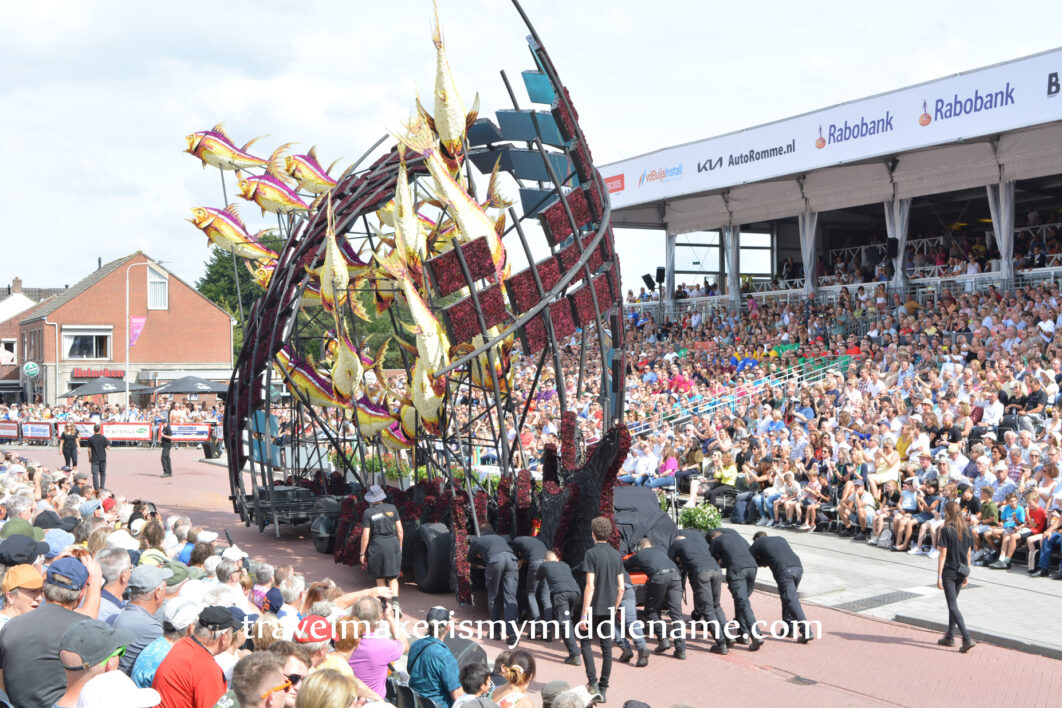
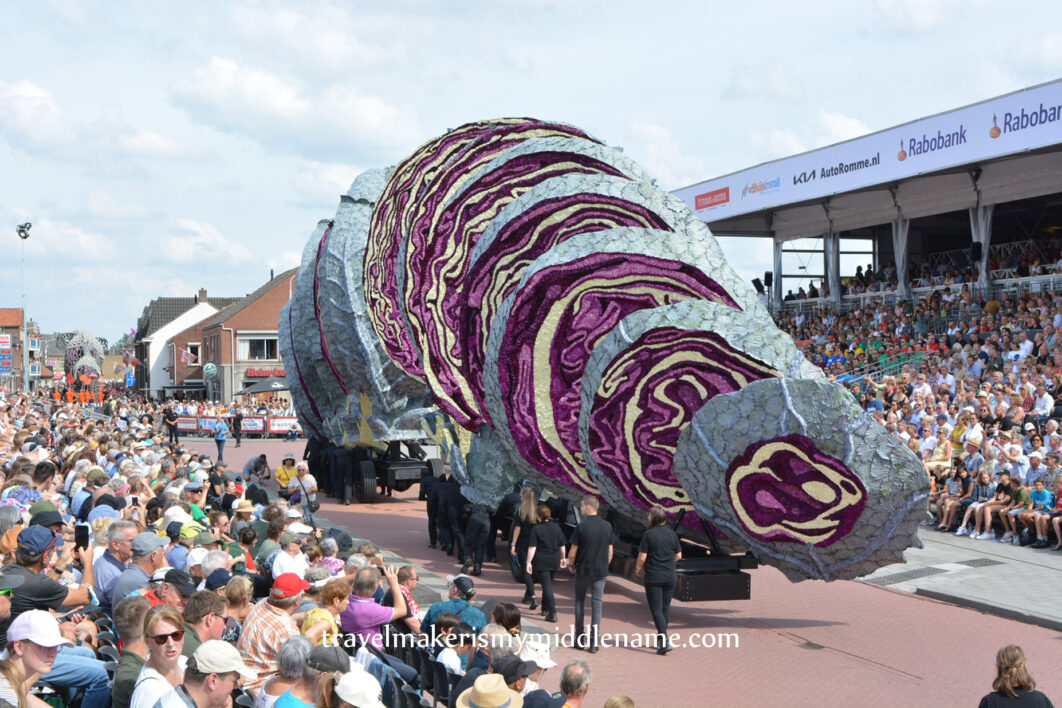
The organisers judge the floats and announce three winners. This makes the day of the parade an exciting day for everyone involved: the designers, builders, performers, and the volunteers that push the giant floats down the street. It is the day thousands of volunteers have worked hard and prepared for all year. Some hamlets will win and some may not; the participants go through many emotions. Even though it is a competition between individual hamlets, there is always a sense of community.
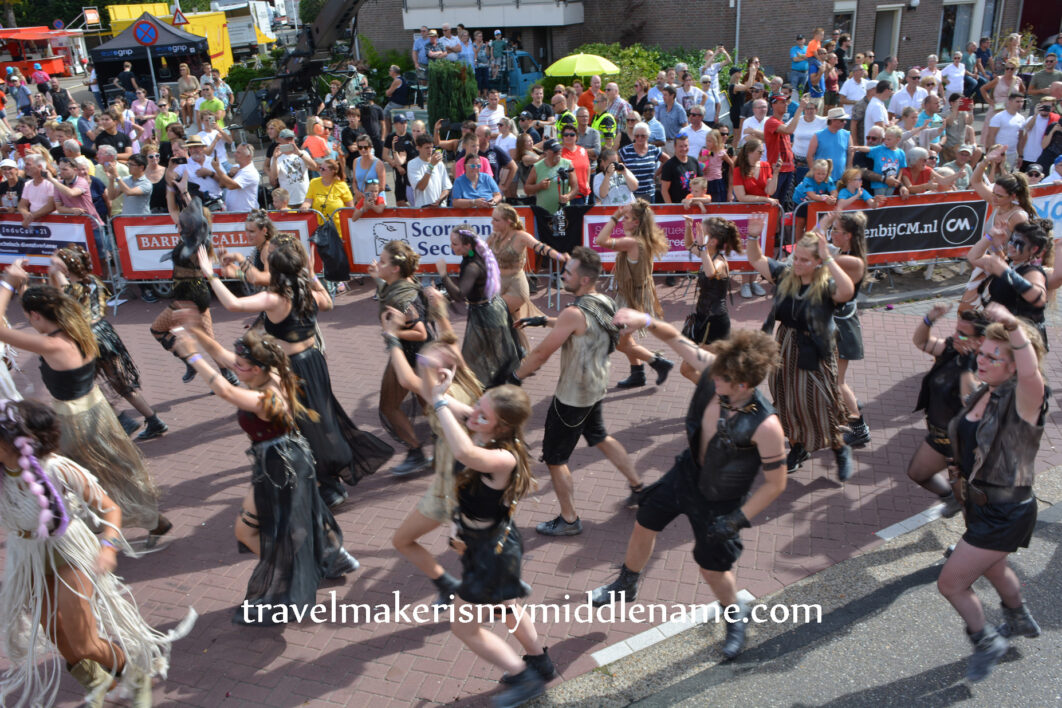
It is this sense of community, belonging, fun and cozy construction sessions and ability to contribute to something amazing that attracts such a large group of volunteers.
After the parade, the amazing creations are taken to an exhibition ground nearby where they are available for one more day for visitors to view before they are taken apart and the flowers discarded.
In the Netherlands, a corso is much more than just a parade. Building the corso float and everything that goes with it is a social, creative and team collaboration process in which the whole community is involved in for a large part of the year. People of all ages, young and old, men and women work together from the design to the construction and to the parade day. This culture is passed on from generation to generation. Thus, the corsos make a great contribution to the social cohesion of their respective communities.
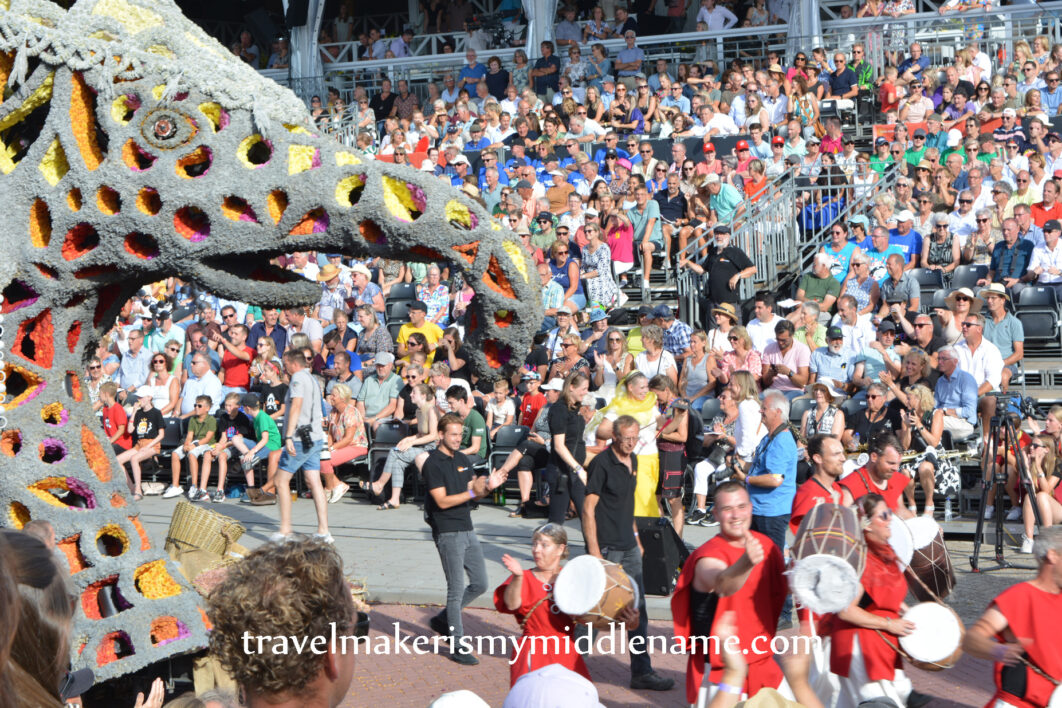
In 2012, the Netherlands ratified the 2003 Unesco Convention for the Protection of Intangible Cultural Heritage. The purpose of the Convention is to protect intangible cultural heritage such as this one. Intangible heritage consists of traditions, rituals, customs and crafts that heritage communities experience as heritage. It gives the participants a sense of identity and continuity that can be passed on to future generations.
Dutch Corso culture was officially listed on the Representative List of Intangible Cultural Heritage of Humanity in 2021.
If you are going to the Netherlands, you should make the effort to visit this amazing display of community and volunteer work that features beautiful dahlia flowers. Zundert has no hotels but visitors can stay in the nearest town of Breda and travel to the parade by bus. Extra services are in place for the parade.
For information on visiting the town of Zundert, see this page on the Corso Zundert’s website: https://corsozundert.nl/en/package-deals/

